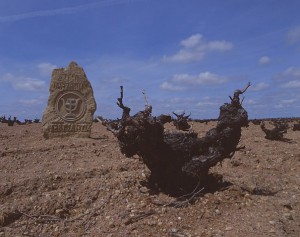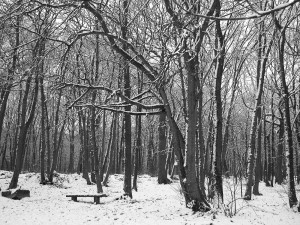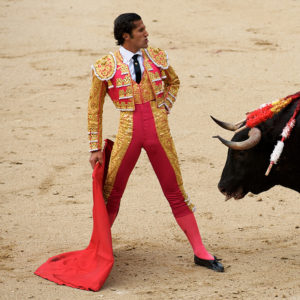 It’s a rainy Monday morning. In lieu of the grind, would you fancy taking a virtual whirlwind visit to the wine region of Toro, Spain, along with sampling slivers of melt-in-your-mouth Pata Negra, Spanish cheese, and then, topping off your experience with some of your favorite champers? Um, hello, happy Monday to me…
It’s a rainy Monday morning. In lieu of the grind, would you fancy taking a virtual whirlwind visit to the wine region of Toro, Spain, along with sampling slivers of melt-in-your-mouth Pata Negra, Spanish cheese, and then, topping off your experience with some of your favorite champers? Um, hello, happy Monday to me…
A little bit about Toro, DO
Toro is a Spanish Denominación de Origen (DO) created in 1987 for wines in the province of Zamora, which is in the northwest of Castilla y Léon, and west of Ribera del Duero. The sandy soils of this DO protected many vines from the phylloxera crisis of the 19th century, which decimated most of the vines of Europe. (Phylloxera is pest which feeds on the roots of grapevines.) As a result, Toro still has a number of very old vineyards with pre-phylloxera Tinta de Toro, which is the primary grape of this region. Although Tinta de Toro and Tempranillo are used by most interchangeably, Tinta de Toro is considered to be an acclimatized clone of Tempranillo. Of the 19,800 acres (8,000 HA) planted in Toro, only 13,500 acres (5,500 HA) are allowed to be used in the production of these wines. Interestingly, about half of the grapes used in the production of Toro (2,500HA) are still from pre-phylloxera rootstocks, with the residual vines grafted onto more resistant rootstocks.
The temperatures of this region vary greatly, ranging from 98.6°F (37°C) in the summer to 12°F (-11°C) in the winter. Temperatures can change drastically from day to night (diurnal temperature), varying from 98.6-68°F (37-20°C) in the summer. If not monitored carefully, the extreme heat can result in very high levels of alcohol. The DO allows up to 15% alcohol levels, but expect levels around 13.5%. With these climatic extremes, extraction must be precise, otherwise the results are wines with overpowering tannins and super high alcohol content. Permitted varietals include Tinta de Toro/Tempranillo, Garnacha/Grenache, White Verdejo and Malavasia.
Bodegas Numanthia
Bodegas Numanthia exudes the true potential of what Toro wines have to offer. The estate was founded in 1998 by the Eguren family and is now run under the direction of Manuel Louzada. I was able to spend some time with Manuel and learn more about these wines and the region.
 “Numancia is the name of an ancient Spanish city that resisted Roman occupancy for over a hundred years. The city stood for its tenacity and resistance,” stated Manuel. Rather than relinquish control of their beloved city and become enslaved by the Romans, the inhabitants of Numancia preferred to die than to surrender, so they burned down their entire city. He added, “We named our wines after these cities as a tribute to their tenacity and the ability of the vines to survive the extreme local climatic conditions and phylloxera… Like Numancia, when I first visited the vineyards in Toro, I was totally impressed to see these ancient vineyards [that were] over a hundred years old, [had] resisted the Phylloxera and, year after year, [had] struggled with the extreme natural conditions of the region (limited rainfall without irrigation, extreme temperatures and very poor soils) to deliver a very, very low yield yet with incredible concentration and magnificent expression. And then I tasted Tinta de Toro wines: the beautiful dark purple color, the richness and the complexity in the nose and finally, the natural sweetness, the creaminess and density in the middle palate and the enormous tannic structure, yet with the elegance of the perfect ripeness… I fell in love with Numanthia and when I was offered to come from Argentina and take care of the winery I, of course, said ‘yes’.”
“Numancia is the name of an ancient Spanish city that resisted Roman occupancy for over a hundred years. The city stood for its tenacity and resistance,” stated Manuel. Rather than relinquish control of their beloved city and become enslaved by the Romans, the inhabitants of Numancia preferred to die than to surrender, so they burned down their entire city. He added, “We named our wines after these cities as a tribute to their tenacity and the ability of the vines to survive the extreme local climatic conditions and phylloxera… Like Numancia, when I first visited the vineyards in Toro, I was totally impressed to see these ancient vineyards [that were] over a hundred years old, [had] resisted the Phylloxera and, year after year, [had] struggled with the extreme natural conditions of the region (limited rainfall without irrigation, extreme temperatures and very poor soils) to deliver a very, very low yield yet with incredible concentration and magnificent expression. And then I tasted Tinta de Toro wines: the beautiful dark purple color, the richness and the complexity in the nose and finally, the natural sweetness, the creaminess and density in the middle palate and the enormous tannic structure, yet with the elegance of the perfect ripeness… I fell in love with Numanthia and when I was offered to come from Argentina and take care of the winery I, of course, said ‘yes’.”
With the bold tannins of Tinta de Toro, these are wines to enjoy (in some instances) 20-30 years from now. Manuel added, “I have been in this business since I was 4 years old and I am now 40 years old. What I have learned is that wine must generate pleasure and emotions from the beginning. We tell our people, the goal here is to make one of the best wines in the world.”
“The berries are like little bombs of flavor. Harvesting, selecting the grapes and crushing must be precise. We hand harvest and hand de-stem. We also do fruit crushing.” Side note: For those who get a quick visual of “I Love Lucy” in Italy crushing grapes… It is by far more hygienic. The workers wear neoprene boots and pants. Manuel continued, “In the case of Termanthia, these grapes come from our vineyard Teso Los Carriles where the age of the vineyards is between 120 and 140 years old. The grapes at the winery are selected and de-stemmed by hand, taken into oak vats of 800 and 1,600 Kg and then crushed by feet (“pigeage” by feet) twice a day during 8 to 10 days (duration of the cold maceration). It takes around 45 minutes to submerge the skins in the must.” (Must is freshly pressed juice that contains the skins, seeds, and stems of the fruit.)
2007 Vintage:
For many vineyards in Europe, 2007 was plagued with a deluge of rain. For the Toro region, because Tempranillo is harvested early (“temprano” means “early” in Spanish), the grapes were saved from the onslaught of rain and the 2007 vintage resulted in very elegant wine.
The Wines:
all 100% Tinta de Toro
2007 Termes – click here to purchase: WS 88, $23, vines are 30-50 years old; lively, nice plummy fruit, tobacco, sandalwood and cinnamon; I truly enjoyed this and thought it was a great price point.
2007 Numanthia: WS 92, $50, vines are 50-120 years old; blackberries, cassis, currants, pencil shavings and black pepper; I’d let this one age a bit. I’d love to try it in a few years.
2006 Termanthia – click here to purchase: ST94/WS 95, $140, vines are 120-140 years old; currants and wood, with some balsamic, sandalwood and truffle notes; intense and long finish. I’d age this one as well.



 Plaza de San Miquel, Los Austrias
Plaza de San Miquel, Los Austrias